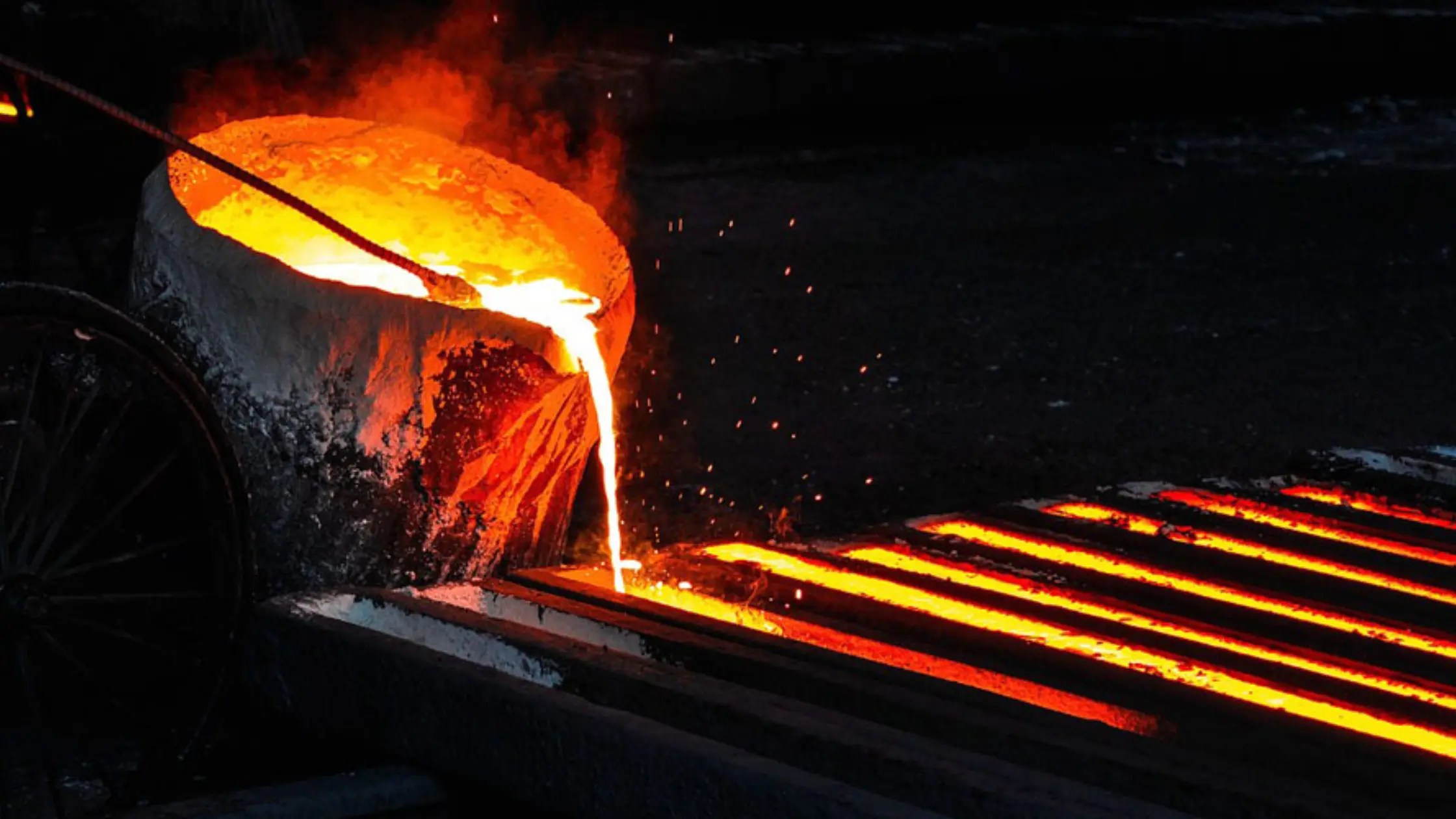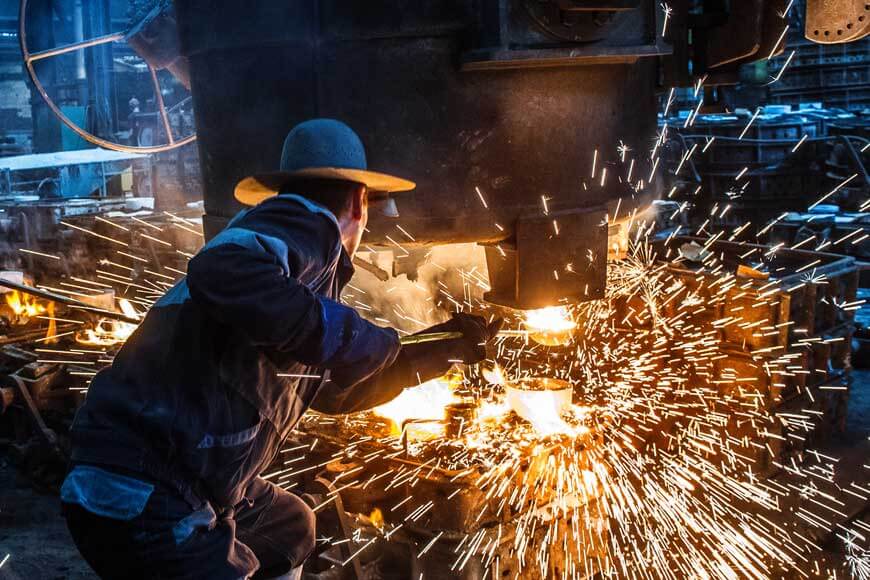Checking out the Art of Metal Casting: Strategies and Applications in Modern Foundries
Metal casting is a time-honored craft that integrates creativity with engineering precision. From ancient techniques to contemporary advancements, this process has actually evolved considerably. Different approaches, such as sand casting and lost-wax casting, display the versatility of the tool. Innovations like 3D printing are improving how foundries run. As the lines between functionality and virtuosity blur, one need to think about exactly how these advancements impact both modern applications and conventional techniques. What lies ahead in this developing landscape?
The Basics of Metal Casting
Metal casting, a critical process in production, involves pouring molten metal right into a mold to accomplish a wanted shape. This method works as a foundation in the manufacturing of complex steel elements across various markets. Crucial element of metal casting include the selection of products, which can vary from light weight aluminum to steel, each selected for its particular homes and application viability. The procedure begins with mold development, which can be made from sand, metal, or ceramics, depending upon the casting method utilized. The molten metal is after that meticulously put into the mold and mildew, where it solidifies and cools down. Vital factors such as temperature level control, cooling down rate, and mold and mildew layout considerably impact the end product's top quality and features. In enhancement, recognizing the physical and chemical homes of the steel help in enhancing casting efficiency, eventually improving the effectiveness of the production procedure and making certain top quality result customized to certain requirements.
Traditional Casting Methods
Conventional casting techniques incorporate a variety of methods that have actually stood the test of time, demonstrating their performance in producing elaborate steel components. One popular approach is sand casting, which utilizes a combination of sand and a bonding representative to create molds. The convenience of sand casting permits the manufacturing of varied forms, making it ideal for both large and small production. One more noteworthy strategy is financial investment casting, frequently utilized for intricate and accurate geometries. This method includes creating a wax pattern that is coated in a ceramic shell, which is after that warmed to get rid of the wax, leaving a dental caries for liquified steel. In addition, pass away casting is utilized for high-volume manufacturing, where liquified metal is injected right into recyclable metal molds. Each of these typical strategies continues to be pertinent, showcasing the workmanship and skill intrinsic in the art of steel casting, while fulfilling the demands of numerous industries.
Modern Innovations in Metal Casting
As sectors advance, developments in steel casting are reshaping production procedures and boosting efficiency. Advanced technologies such as 3D printing and computer-aided style (CAD) are revolutionizing mold and mildew creation, permitting for intricate designs that were previously unattainable. These methods help with fast prototyping, minimizing preparations and cultivating imagination in product advancement.
Furthermore, the integration of automation and robotics in shops is streamlining procedures, decreasing human error, and enhancing security. Smart sensing units and real-time monitoring systems enable exact control of temperature and product residential or commercial properties, ensuring greater high quality results.
Moreover, lasting techniques are arising, with using energy-efficient furnaces and recycled materials, decreasing ecological influence. The fostering of composite materials and sophisticated alloys is likewise broadening the opportunities of steel casting, causing stronger and lighter components. Overall, these modern-day developments are changing steel casting right into an extra reliable, precise, and environmentally liable sector.
Applications Across Various Industries

While diverse markets progressively depend on metal casting, the strategy's flexibility plays an essential role in meeting details application needs. In the automobile market, steel casting is vital for creating engine parts, transmission real estates, and various other elaborate components that call for precision and longevity. The aerospace industry gain from light-weight casted components, making certain both performance and fuel performance. Additionally, the building sector utilizes metal casting for architectural elements, such as light beams and sustains, enhancing the honesty of buildings and bridges.
The power field employs steel casting for generator blades and other considerable equipment that must withstand extreme problems. Clinical devices additionally see applications of steel casting, particularly in surgical tools and prosthetics, where accuracy is vital - Aluminum Foundry. Overall, the flexibility and reliability of steel casting make it crucial across various areas, adding to the innovation of innovation and facilities in modern culture
The Artistic Side of Metal Casting
Although commonly connected with commercial applications, steel casting additionally finds its place in the domain name of art, where knowledgeable artisans change liquified steel into intricate styles and meaningful sculptures. This creative side of metal casting incorporates varied strategies, consisting of sand casting, lost-wax casting, and financial investment casting, each offering one-of-a-kind possibilities for creativity. Artists use these techniques to produce jobs that range from abstract forms to realistic depictions, enabling personal expression and commentary on modern concerns.

Frequently Asked Questions
What Precaution Are Essential in a Steel Casting Foundry?
Vital safety and security actions in a metal casting factory include personal safety tools, proper air flow, emergency situation methods, training in managing liquified metals, normal tools maintenance, and clear communication of dangers to ensure worker safety and wellness. Aluminum Foundry.
How Do Environmental Laws Influence Metal Casting Processes?
Environmental regulations substantially influence metal casting procedures by mandating using cleaner innovations, reducing discharges, and promoting waste monitoring practices. Compliance commonly needs financial investments in devices, training, and modifications to existing procedures to decrease environmental influence.
What Are the Common Issues in Metal Castings?
Typical defects in steel spreadings consist of porosity, shrinkage, additions, and misruns. These issues can emerge from incorrect mold and mildew design, insufficient temperature level control, or contamination, eventually influencing the architectural integrity and overall top quality of the last item.
How Is Waste Managed Throughout Metal Casting Production?
Waste administration in steel casting manufacturing includes recycling scrap steel, implementing reliable material usage, and utilizing advanced technologies to decrease waste. Shops embrace methods like sand reclamation and proper disposal techniques to reduce ecological effect.
What Career Opportunities Exist in the Metal Casting Market?
The metal casting industry uses diverse career possibilities, including duties such as shop manager, metallurgical designer, high quality control examiner, pattern manufacturer, and production supervisor, accommodating various ability and knowledge in producing processes.
Metal casting, a critical process in manufacturing, involves putting molten steel into a mold and mildew to achieve a wanted shape. In addition, die casting is utilized for high-volume manufacturing, where liquified metal is injected into multiple-use steel molds. While varied industries more info significantly depend on steel casting, the technique's versatility plays an essential role in conference specific application needs. Typically connected with industrial applications, metal casting also locates its place in the domain of art, where competent artisans transform liquified metal into intricate designs and meaningful sculptures. Waste administration in steel casting manufacturing includes reusing scrap steel, executing effective product use, and using sophisticated innovations to minimize waste.